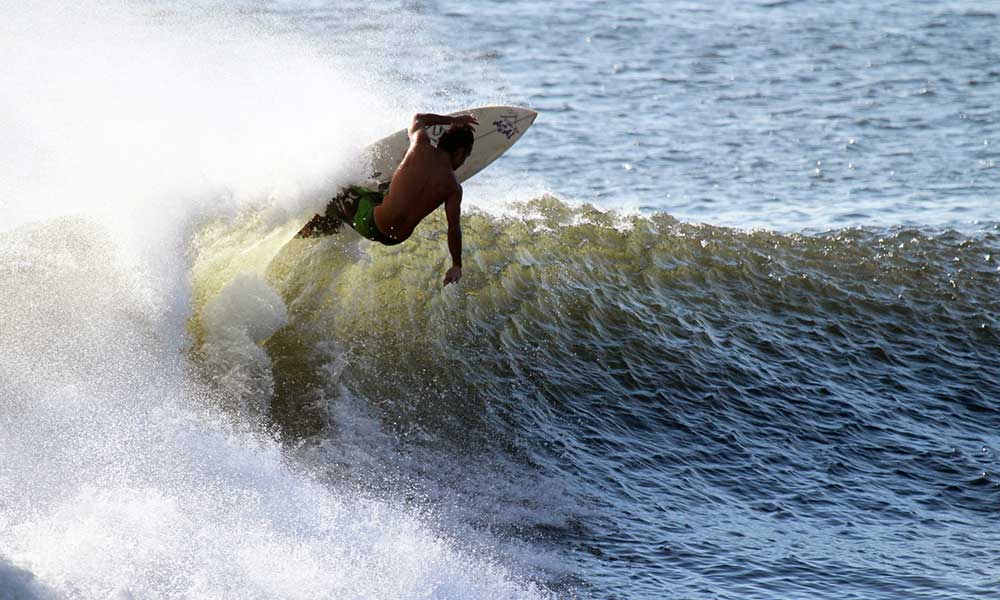The Thruster fin setup was invented by Simon Anderson in 1980.
It is a three-fin setup that essentially adds a central fin to a twin-fin, but it is incredibly effective, and it is now ubiquitous in the surfing community.
Putting the Thruster Surfboard in Context
The Thruster design was established during a period of division in the surfing community.
The shortboard was beginning to take over from the longboard and while some surfers preferred the single fin models previously seen on the longboard, others preferred the twin fin.
Simon Anderson was actually in favor of the single fin, but believed that it wasn’t quite right for what he needed.
He wanted the control of a twin fin with the straight-line force of the single fin, and that’s where the idea for the tri-fin Thruster was born.
The Development of Simon Anderson’s Thruster
Initially, the Thruster surfboard was viewed with skepticism, but Anderson proved that it was effective and within a couple of years, it was one of the most common surfboard setups.
Simon Anderson was not just a run-of-the-mill surfer.
He was one of the best surfers in the world at the time, earning regular top 10 rankings.
He was also a big guy, and the additional control provided by the Thruster (in comparison to the twin fin), impressed his fellow surfers enough for them to get on board.
What Does Thruster Mean?
A Thruster is a type of fin setup that uses three fins of equal size.
These include two outer fins and a central fin that is placed a little further back.
It is also known as a tri-fin.
What are Thrusters Used for?
The Thruster design works best when you’re surfing rail to rail, as that’s where you can generate the “thrust” for which it is named.
The Thruster fin design is perfect for tight, sharp, vertical maneuvers.







